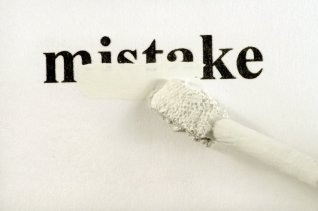 For the first time in my academic life, I am taking a fully-online course in this spring semester, and I should state that it is so good so far with all the projects with strict deadlines, meticulous organization/ design and also online conferences using Blackboard. At this point prior to my actual post, I firstly want to shortly mention a simple award system applied by our instructor, Christopher Johnson. As an instructor who used Moodle and similar OLE tools, I know that it is really open to lots of goofs and little mistakes related to deadlines, days, or else. Dr. Johnson, at the beginning of this course, informed us that he would give extra credits provided that we spot some goofs anywhere possible. At that point, I thought this is really effective since (1) students might read everything in detail to spot some mistakes and (2) enjoy extra credits while learning about this course in detail. This is really effective considering the fact that participants of online course might not be as motivated as students in face-to-face classrooms to keep track of everything.
For the first time in my academic life, I am taking a fully-online course in this spring semester, and I should state that it is so good so far with all the projects with strict deadlines, meticulous organization/ design and also online conferences using Blackboard. At this point prior to my actual post, I firstly want to shortly mention a simple award system applied by our instructor, Christopher Johnson. As an instructor who used Moodle and similar OLE tools, I know that it is really open to lots of goofs and little mistakes related to deadlines, days, or else. Dr. Johnson, at the beginning of this course, informed us that he would give extra credits provided that we spot some goofs anywhere possible. At that point, I thought this is really effective since (1) students might read everything in detail to spot some mistakes and (2) enjoy extra credits while learning about this course in detail. This is really effective considering the fact that participants of online course might not be as motivated as students in face-to-face classrooms to keep track of everything.
In fact, there are so many other things I (will) have about these courses here and below is my response to a task to introduce a source of insightful talks and briefly reflect on them. As a keen supporter of Ken Robinson, I would happily like to share this assignment, some other videos and my response as well. All the videos are really awesome and they are striking in the sense that they provoke real thought and give a very radical perspective to the self about today’s education system. I hope you will enjoy watching them and reading my response. Thank you for reading
Steps to Completion
Part One
The following videos spark ideas and make me think. Watch the videos and then post an answer to the question below in the On Creativity discussion forum. The videos above come from the TED talks. If you are not familiar with the TED talks, I highly recommend them.
- Ken Robinson says schools kill creativity (19:29)
- Adora Svitak: What adults can learn from kids (8:13)
- Bring on the learning revolution! (17:57)
After watching the videos, what did you think?
Simple question, but I am looking for depth in your answer. I expect something beyond “I liked the videos.”
Required Elements:
Let us know what ideas, thoughts, or feelings each talk sparked for you. Do you agree or disagree with everyone or agree with some but not others. How do their ideas play out in your own teaching experience. While there are no wrong answers, they should demonstrate that you have watched and thought about what was said.
Finally, which of the videos impacted you the most – either positively or negatively?
Part Two
The second part of this assignment is also fairly simple, but again I am looking for depth of thought.
Required Element:
Based on ideas from the videos or your other research, think about an existing instructional activity. How might you modify the activity to allow students to learn how to be creative and/or express creativity. I am looking for a brief couple of paragraphs. The first should discuss the existing activity and the next how you would change it. I am not looking for a formal lesson plan, just a discussion.
Also, if you are in K-12 [with the emphasis on standardized testing] or teaching a class bound where the instructional activity is pre-programed for you, I know that changing the actual activity may be difficult. However, I believe we can, and must, increase the chances that students learn how to be creative. So don’t limit yourself.
Part Three
Watch the following video by Geoffrey Canada titled Geoffrey Canada: Our failing schools. Enough is enough!
Required Element:
After watching the video, write a short reflection on what you will do to keep your self creative and innovative.
PART-I
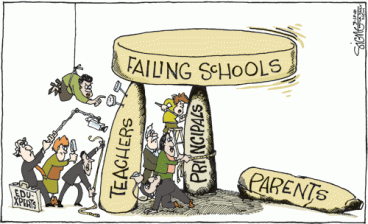
All three videos are really thought provoking and also striking in the sense that, in our current education system, we seem to be so much focused on standardizing our learners with all those tests and information load that we ignore the need for divergent thinking or being ‘childish’. In the first video, Ken Robinson, who is actually a person of admiration in terms of his radical ideas and talks, emphasized the extraordinary capacities of children that are squandered through education. I totally agree with him at that point and the proof toward this is the talk by Adora Svitak who very competently expresses what adults can learn from kids and very well justifies why the former should try harder and admit to the fact that kids will be smarter and more able so that progress happens in our world. Back to the first video by Robinson, it is also striking to note that we do not grow into creativity but grow out of it or educate out of it. One best support for this fact is another video, about which I published a post on my personal blog. This video tells that the current education system was created in 19th century to serve to industrialization and manpower of various sectors. Therefore, the students at every phase of education seems to be batched like 2012, 2013 graduates with certain capabilities and knowledge which have been highly standardized, and out of which creativity has been mostly trimmed. Ken Robinson in another talk mentions how such an important talent as ‘divergent thinking’ which is a little different from creativity dies through ages and the biggest factor for this is how we have been standardized through education. Even ADHD, which is regarded as a problem of not being able concentrate well, might be one of the possible consequences of such an education system where learners are forced to concentrate on the blackboard while they have some many other attractive things around. In this respect, integrating what they might enjoy or benefit more into our lessons could be an effective step toward attracting our students, but it might be a sort of reform activity which is in fact, as Robinson tells us in his other video, not desirable since it is aimed to improve a broken model.
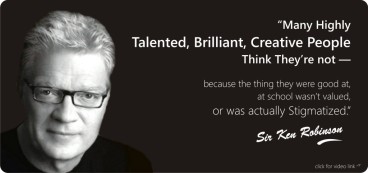 There are some more striking facts mentioned and emphasized in these videos, but I am just going to list a few more of them within the limitations of this writing. Ken Robinson tells us the students who started school in the year of 2006 will be retiring in 2065. While it is even difficult to project what might happen in a 5-year period, it is ridiculous to expect our schools established a few hundred years ago to empower learners with the knowledge and skills that will help them create and innovate things of the far future. In this respect, although the examples might sound exceptional, a few of the biggest innovators in our age such as Steve Jobs and Bill Gates or else do not have really bright educational or academic background. Reading Job’s biography, I know that he had a personality similar to the kid depiction of Adora Svitak who tells us that we kids aren’t hampered as much when it comes to thinking about reasons why not to do things and kids can be full of inspiring aspirations and hopeful thinking.
There are some more striking facts mentioned and emphasized in these videos, but I am just going to list a few more of them within the limitations of this writing. Ken Robinson tells us the students who started school in the year of 2006 will be retiring in 2065. While it is even difficult to project what might happen in a 5-year period, it is ridiculous to expect our schools established a few hundred years ago to empower learners with the knowledge and skills that will help them create and innovate things of the far future. In this respect, although the examples might sound exceptional, a few of the biggest innovators in our age such as Steve Jobs and Bill Gates or else do not have really bright educational or academic background. Reading Job’s biography, I know that he had a personality similar to the kid depiction of Adora Svitak who tells us that we kids aren’t hampered as much when it comes to thinking about reasons why not to do things and kids can be full of inspiring aspirations and hopeful thinking.
From all these sentences, it should not be understood that we need to eradicate all academic institutions and seize the day. What I aim to emphasize in light of all these inspiring videos is that we need to give enough thought to the big picture of education and reflect much on what we are already doing with the power in our hands as educators or simply adults. We should not be struggling to standardize them through tests and other stuff. For this situation, the Finnish case can give some ideas to reflect more. Through this Finnish case link, you can access to 3 more videos showing a BBC report on the success of Finland in education. In fact, there is no need to be pessimistic; I am sure and I know there are also creativity, innovation, divergent thinking, art, literature, real-life things going on in our classes around the world. As Robinson states, KIPP is a good example for this. What we should do might be to think, which we need a lot in teaching in this technologic era. As far as I have seen on TED’s website, there are so many reviews under Robinson’s videos saying that how one could be optimistic while teachers are really low-paid and so many other problems exist. On the other hand, I believe that there are so many other success stories like a teacher in Turkey who spent most of his salary to establish a divergent classroom environment to promote quality education. One might think it is ‘childish’, but, as stated by Adora Svitak, ‘the traits the word childish addresses are seen so often in adults that we should abolish this age-discriminatory word when it comes to criticizing behavior associated with irresponsibility and irrational thinking’ and ‘who is to say that certain types of irrational thinking aren’t exactly what the world needs?’
PART-II
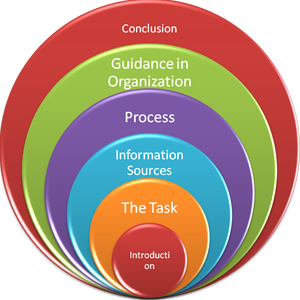
There are so many activities out there or in textbooks and learning materials that could actually be done in a different way so that they are more constructive, reflective, cooperative, authentic, goal-directed, and so more meaningful. For example, in an existing activity about ‘travel’ in of the textbooks I used for my language classes, students are expected to choose one of a total of 4 options of text giving information about different holiday resorts. Afterwards, students are expected to come up with some reasons why they have chosen that specific place and suggest it to their friends by using ‘modal’ verbs. Regarding this activity it does not seem that meaningful since it is not first of all authentic, giving some set of options that may not appeal to students. It has a bit of being cooperative, but students are not expected to work in groups at first, and later they may not listen to each other while their friends are stating their reasons. What’s more, it is not that reflective at all since there is only a total of 4 options with some set budgets and so. Finally, there is not a successful and effective integration of various learning styles and tools appealing to different senses and individual differences.
In order to make this activity more meaningful and even foster creativity, I think it could be done in the form of a webquest which guides students to use unlimited sources on the Internet, reflect on advantages and disadvantages of all of them, reach authentic information on the web just like other people do in real-life situations, collaborate with their groups and create some kind of presentations using a variety of multimedia tools. The webquest I am proposing to use can be accessed through this link: http://www.u.arizona.edu/~mpolat/webquest/wqindex.html
First, students are introduced to the task and visit different real ‘travel’ websites to come up with an itinerary by reflecting on different options of their choice. Later on they are expected to present it in front of their friends and try to sell this package by also enriching it with multimedia tools like videos. By re-designing the activity in this way, students would learn and practice the same grammar forms and travel-related vocabulary items, but totally in a different way which provides students with more freedom, authenticity, reflection, action, meaning and creativity. In order to achieve this in my classrooms, what I do is to put myself into my students’ shoes and think how they could learn the things they are supposed to do in a real-life situation and more fun way.
PART-III
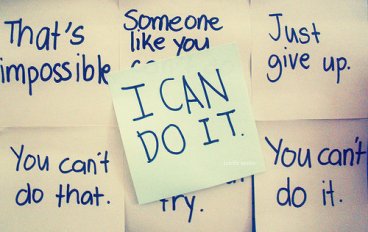 All these videos I have watched for this task have been an eye-opener for me and this last one is no exception. At first, I was amazed by the bank example which implies that we continue to do our mistakes without paying enough attention to reason, logic, and meaningfulness. We know that there are problems and they are going to exist in the future as well, but it does not seem that we do our best to prevent these problems. There are reasons for this. One of the first reasons might be the fact that even educators today take their professions as others by forgetting the fact that we deal with human beings, little humans that will replace us in the future and take over what we are assigned to do today. Then, being an educator is a job in which we need to be well aware of the fact that ownership and dedication are really important things. For instance, instead of complaining about the weaknesses of an activity that we will do in class, and thinking about our salary in our bank accounts, we need to spend the whole night, if possible, to redesign that specific activity so that it could be more meaningful and engaging for our students. Especially, in language learning, tasks which are not meaningful, which do not reflect real-life situations, or which do not foster creativity exist a lot in textbooks and everywhere. These tasks are really superficial, call for rote-memorization, are mechanic and etc. Instead of taking all these and using them as they are, I personally, for the sake of creativity, put myself into my students’ shoes as best as I can; think about what they might like, enjoy and how they learn things. Then, I try to redesign activities and a whole class accordingly as much as I can of course because there are sometimes so much for a teacher to do that one needs to manage time carefully. Therefore, I have this idea that changing something really tiny, creating one single activity that really fosters creative and meaningful learning, and that could give me an idea about what I could do to appeal my students might be sometimes more than enough since this change we have to do is not an overnight thing. However, we should always be aware of this need and the fact that we need to compensate for the mistakes and, as Geoffrey Canada says, failures that have been existing for a considerable length of time.
All these videos I have watched for this task have been an eye-opener for me and this last one is no exception. At first, I was amazed by the bank example which implies that we continue to do our mistakes without paying enough attention to reason, logic, and meaningfulness. We know that there are problems and they are going to exist in the future as well, but it does not seem that we do our best to prevent these problems. There are reasons for this. One of the first reasons might be the fact that even educators today take their professions as others by forgetting the fact that we deal with human beings, little humans that will replace us in the future and take over what we are assigned to do today. Then, being an educator is a job in which we need to be well aware of the fact that ownership and dedication are really important things. For instance, instead of complaining about the weaknesses of an activity that we will do in class, and thinking about our salary in our bank accounts, we need to spend the whole night, if possible, to redesign that specific activity so that it could be more meaningful and engaging for our students. Especially, in language learning, tasks which are not meaningful, which do not reflect real-life situations, or which do not foster creativity exist a lot in textbooks and everywhere. These tasks are really superficial, call for rote-memorization, are mechanic and etc. Instead of taking all these and using them as they are, I personally, for the sake of creativity, put myself into my students’ shoes as best as I can; think about what they might like, enjoy and how they learn things. Then, I try to redesign activities and a whole class accordingly as much as I can of course because there are sometimes so much for a teacher to do that one needs to manage time carefully. Therefore, I have this idea that changing something really tiny, creating one single activity that really fosters creative and meaningful learning, and that could give me an idea about what I could do to appeal my students might be sometimes more than enough since this change we have to do is not an overnight thing. However, we should always be aware of this need and the fact that we need to compensate for the mistakes and, as Geoffrey Canada says, failures that have been existing for a considerable length of time.
